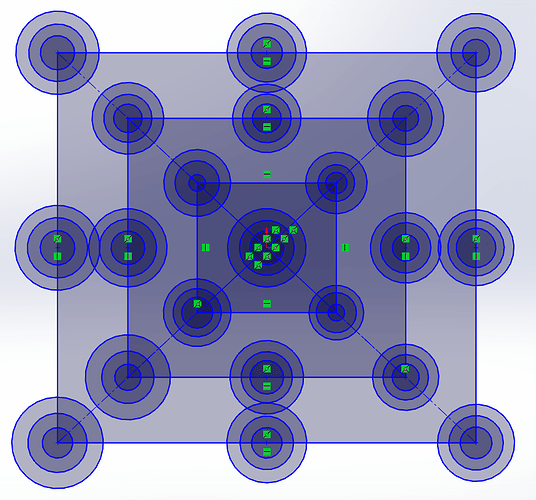Yes, correct. I guess I explained too much. Figured that it might be helpful to someone who understood Gcode and absolute vs relative space. In the end I want to micro step while building G29 mesh. The UI in OctoPrint has only 0.1 as the smallest move. Was trying to set up smaller moves via Gcode and macros.
Know enough to get in trouble but not enough to know what I am doing wrong.
Seems to me it can't work. Your babysteps will not be taken into account until the current motherboard GCode buffer is flushed. G29 and G28 are loooooonnnnng commands !
Suggestion : you could create a GCode pattern. for example circles or spirals at various places and use real, hardware babystepping commands (encoder) while "printing" (drawing). Doing this with OctoPrint is not a great idea IMHO. You have to do this on the motherboard hardware, bypassing the command buffer. Reason why Marlin has babystepping. Reason why CNC machine tools have electronic handwheels...
I think you can't do what you need without the encoder and a real time "DRO".
One of the reasons why I'm developping this : Could this become a plugin? ; I keep the encoder, and display real time Marlin UI overlay window on the OctoPrint display. The best of the two worlds. But you have to use the classic HID (LCD + encoder) or do some electronics...
A pattern like this one.
Although super interesting, this is way out of my league. I have a mesh working now and, even though it does now have the fine resolution I need, it works better than not having it. I will try a flatter surface like glass next to see if this brings me to a better tolerance for the pens I want to use.
Super grateful for your time and knowledge.
No skills needed, other than ordering PCBs from china, a few cheap components from Amazon eBay Mouser, RS or whatever ! And a display swap in Marlin's Configuration.h. (I'm myself a noob with OctoPrint coding)
I will measure the lag again (did it 1 year ago, but forgot the results ; it's in the order of 50 milliseconds IIRC). It's near to real time, even in a VNC client window.
